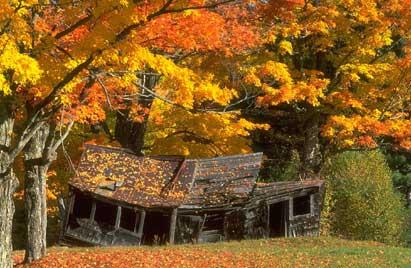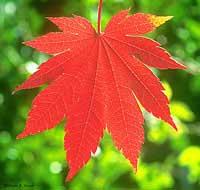Autumn colors

The
mixtures of colors that come with autumn surprise us every year. Soon the trees of our forests will begin to dress in red, but why does that happen? Here is the last theory.

Recently the new data that make up the theory of the reason for the color change of the leaves have been exposed. According to the recent work published in the journal Tree Physiology, that redness would be a protection. Sun protection when light is very intense, which can inhibit photosynthesis. This can happen throughout the year. But in autumn, when preparing for tree leaves to fall, the tree has to reabsorb as many food as possible. At that time photosynthetic fabrics are weaker than ever before, especially in the face of intense light and other stressful situations.
The molecule that gives a reddish color to the leaf is anthocyanin. The large amount of anthocyanin begins to form immediately after the tree reabsorbs food from the leaves. The pigment is located above all near the surface of the leaves, forming a sunscreen at the weakest moment. This prevents inhibition of photosynthesis and provides the energy needed to continue absorbing food from leaves.
The concentration of this pigment also increases in conditions such as very cold temperature, droughts and low nutrient content, mainly nitrogen, phosphorus and potassium. Therefore, the most intense colors appear on sunny and dry days when it is cold day and night.
Buletina
Bidali zure helbide elektronikoa eta jaso asteroko buletina zure sarrera-ontzian











